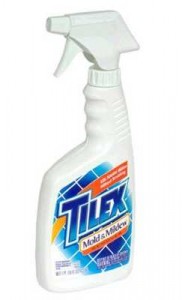Mold is a very common problem here in the San Francisco Bay Area, especially in the rainy season. Mold is not dirt. It is a living organism. Mold produces stains on walls and makes clothes smelly musty There are a lot of myths about mold. First of all, there is no such thing as a ‘mold-free’ apartment. Mold is everywhere. It is in every room in your house. It is in your car, it is in your clothes, it is in your drawers. There is mold in every restaurant, coffee shop, and doctor’s office that you have ever visited. If you have cheese in your refrigerator, then there is mold in your refrigerator because adding mold to milk is how they make cheese.
The most important thing to remember is that mold needs moisture. That is why there is a lot more mold here in the bay area during the winter rainy season than in the summer. To reduce or kill mold, you must address the conditions that allow mildew to grow.
AIR. Mold likes moist, stagnant air. Let in fresh air, particularly in high humidity areas, such as the bathroom and kitchen. Keep a window ajar or use an exhaust fan, if there is one, to allow the air to circulate. Mold and mildew can grow quickly in wet clothes and towels. Don’t let wet clothes or towels sit on the floor or in a pile. Wash and dry wet clothes and towels frequently.
LIGHT. Mold grows in dark places. Let in sunlight. Don’t keep your window shades closed all the time. There are many unhealthy micro-organisms in addition to mold that thrive in dark places that are killed by sunlight. This explains why green mold grows on the north side of trees but not on the south side. Living in a perpetually dark room is very unhealthy. That is why it is illegal in California to use a room without a window or skylight as a bedroom.
HEAT. Mold likes heat. Don’t overheat your house.
 Mold Remover. There are many mold removal products sold in supermarkets and drug stores. Make sure that the product says that it disinfects. Be sure that you are not buying soap scum remover, which is often placed next to the mold remover in stores and often comes in very similar containers. If you want a free bottle of mold killer, you can pick one up in my chocolate room! I always keep it in stock. Read the label. To remove mold on a bathroom ceiling, use a sponge mop on a stick. That way, you can clean the ceiling without getting on a ladder.
Mold Remover. There are many mold removal products sold in supermarkets and drug stores. Make sure that the product says that it disinfects. Be sure that you are not buying soap scum remover, which is often placed next to the mold remover in stores and often comes in very similar containers. If you want a free bottle of mold killer, you can pick one up in my chocolate room! I always keep it in stock. Read the label. To remove mold on a bathroom ceiling, use a sponge mop on a stick. That way, you can clean the ceiling without getting on a ladder.
Bleach. Don’t use bleach to remove mold or mildew. While bleach will kill mold, it is much less effective in preventing mold from returning than mold remover. Bleach may damage your walls, and your room will smell like an over-chlorinated swimming pool when you are done.
